Since its introduction, the Canon 5D line has had a significant presence in the professional and prosumer photography segment. The 5D line was first introduced in August 2005, and its release stunned the photographic world by offering a full-frame sensor at an affordable price for photographers. After the introduction of the 5D, more people could afford full-frame cameras, whether they were working professionals or hobbyists.
Ultimately, the 5 series was so successful that it was a major factor in the demise of Canon’s previous professional full-frame series of cameras, the 1Ds series. The 5 series prompted Canon to rethink how to provide value to its professional and prosumer user base.
In this article, which will be updated when Canon releases new 5 series cameras, we go back and explore the evolution of the 5 series cameras in Canon’s digital era, and also the importance of the 5 series in the market.
Canon EOS 5D
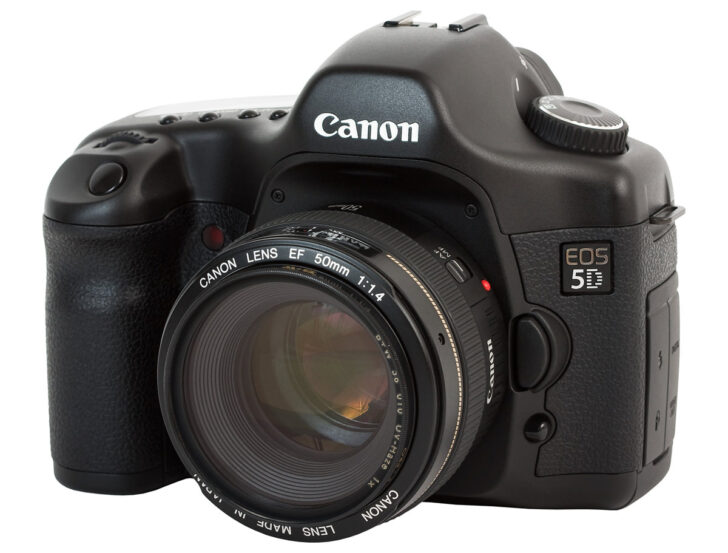
This was the first full-frame camera that I owned, along with many other photographers, who at the time could only lust over the 1Ds series of cameras.
This camera was released in August 2005 and blew the industry away. Launching at $3299, this “reasonable” price was, at the time, unheard of for a full-frame camera.
Its 12.8-megapixel CMOS sensor delivered excellent dynamic range (for its time) and low-light performance, producing images that rivalled those of high-end models like the Canon 1Ds, which cost nearly triple.
The EOS 5D with its sub-$4,000 price tag was introduced to a fairly rapturous reception among existing Canon owners here on dpreview as well as the two ends of the spectrum from other brand owners; everything from jealousy and incredulous dismissal. It’s pretty clear that two camps have now established themselves, quite a few people have nailed their preference to the wall, being in the “Full Frame or nothing” group or the “Cropped is better” group.
DPReview
Oddly enough, there was a look about the image output of this camera that was hard to replicate in Canon’s later sensor versions. Yes, I know this gets into the fabled “microcontrast” level of lore, but a much heavier CFA (color filter array) that didn’t prioritize high ISO noise and dynamic range efficiency led to great color output.
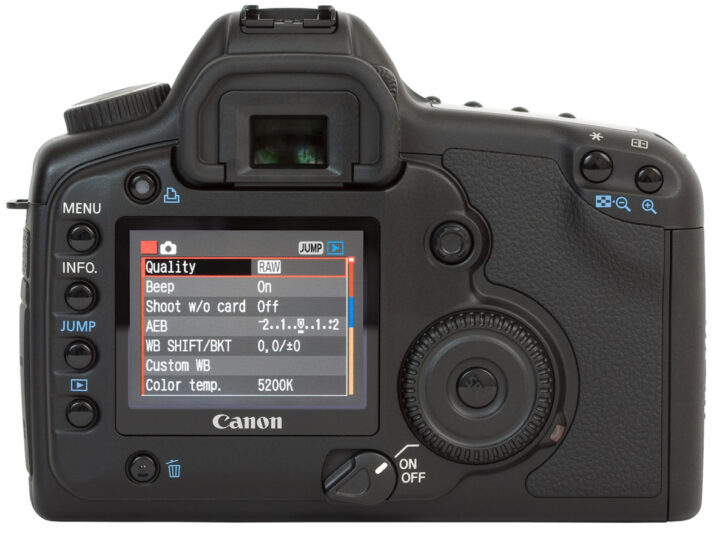
You can now find these cameras on eBay and other websites for 300 or less, and it’s an interesting purchase if you ever wondered how it all began.
Key Features
- 12.8 Megapixel
- Full-frame CMOS Sensor
- Durable Shutter
- 2.5″ LCD Display
- Uses Canon EF Lenses
- Picture Style Settings
The Canon EOS 5D can still be purchased through various used gear retailers. If you’re looking to get an old camera, I think the EOS 5D would be a lot of fun for a few hundred dollars.
- KameraStore has the EOS 5D for €215 with the battery grip
- KEH has the EOS 5D starting at $152
Canon EOS 5D Mark II – The Hybrid Video Camera was Born
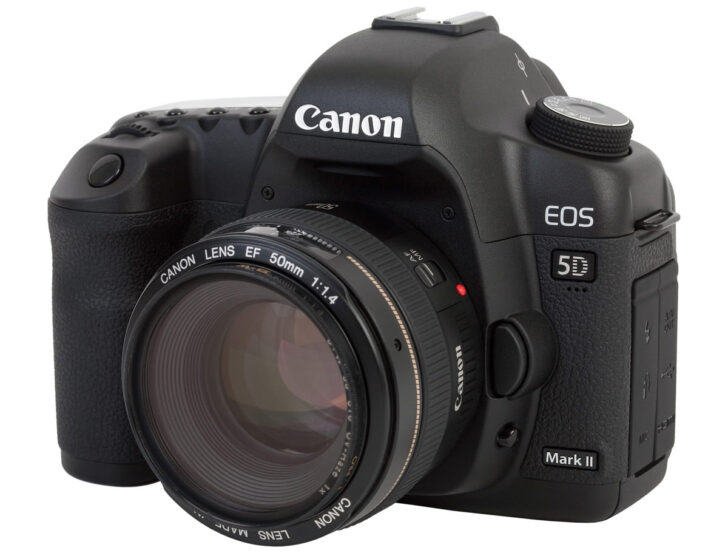
I remember when this camera was released. There were people amazed by 21MP and lamenting the fact that Canon was “crazy for perpetuating the megapixel race” – yes, at 21MP. Sites showed that you can’t get the full 21MP if you zoomed into 200% and didn’t use any deconvolution-based sharpening.
Remember this when you complain about 24MP.
However, what created excitement around this camera was its video recording capabilities. The 5D Mark II introduced full HD video recording (1080p at 30 fps), a first for full-frame DSLRs. This revolutionized filmmaking, enabling independent filmmakers, documentarians, and even Hollywood productions to achieve cinematic quality at a fraction of the cost of traditional video cameras.
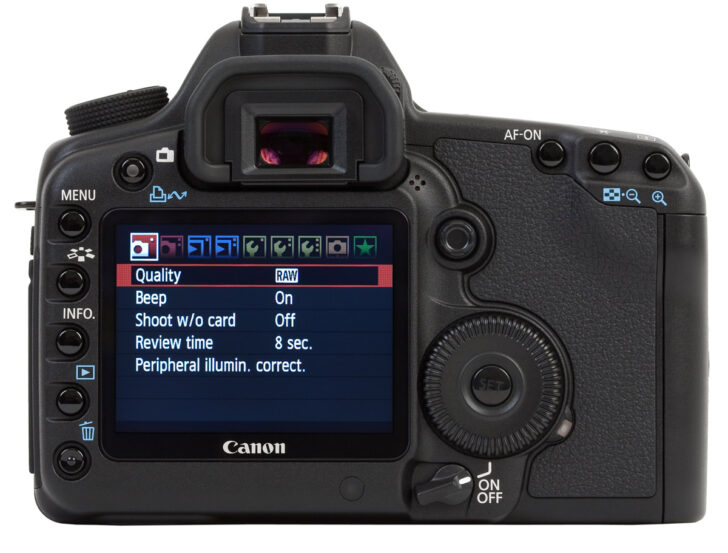
Productions like House M.D. and The Avengers used the 5D Mark II, utilizing its capability to achieve shallow depth of field and professional-quality video. This changed the camera and video world overnight, and competitors like Nikon and Panasonic had to quickly follow suit by incorporating video into their DSLRs, and the era of hybrid cameras was born. Yes, for those that still dream about their “stills camera only” camera, this camera is at fault.
The Canon EOS 5D Mark II is a very impressive DSLR which even with the caveats and competition is one we can confidently award our highest recommendation. The image quality is superb and the camera packed to the brim with features. Indeed its testament to how good the 5D Mark II is that it can be recommended as a still-camera alone, or a movie camera alone. We’re also pleased to see Canon release firmware not just to correct early problems, but additionally equip the camera with greater functionality. It’s a truly worthy successor to the original ‘budget’ full-framer.
CameraLabs
Key Features
- 21.1 Megapixel Full-Frame Sensor
- 3.0″ High Resolution LCD Display
- Live View Mode
- 1080p Movie Mode
- Dust & Weather-Resistant
- Self-Cleaning Sensor
- Broad ISO Range (50-25600)
- 3.9 fps Burst Mode
Canon EOS 5D Mark III
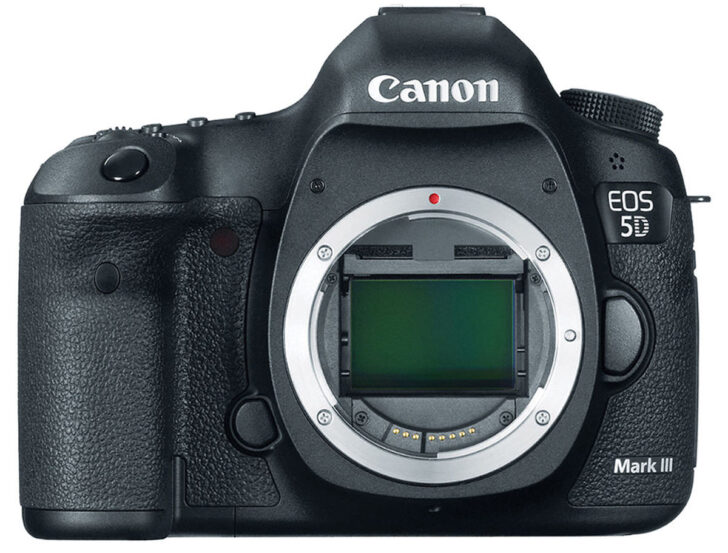
The Canon 5D Mark III, which was launched in March 2012, was a good update from the Canon 5D Mark II, and it had big shoes to fill given the popularity of the Canon 5D Mark II. The price tag of $3,500 came with a 22.3-megapixel full-frame sensor that claimed to offer increased dynamic range and improved ISO noise handling over that of the 5D Mark II.
The Canon 5D Mark II shutter was faster than the Mark II, delivering 6 fps, and had a much improved autofocus by carrying a 61-point autofocus system from the 1 series. It also used Dual DIGIC 5+ processors for faster speeds (the first time dual DIGICs were used outside of the 1 series cameras).
The 1080p video quality was better with 60 fps frame rate, more recording options, and improved controls.
The 1DX, having launched in 2011 a year prior, made it clear that Canon now had the 1DX and the 5D Mark III as the two professional full-frame cameras in Canon’s lineup.
Still, it wasn’t all good. There were sensor issues that created problems for users, especially in the forums such as dpreview. Banding (visible noise lines) was very noticeable in low-light photographs, especially shots that pulled up shadows and needed shadow recovery. Overnight, camera forums were filled with pushing shadows 4+ stops and taking available light photographs of bats in caves, at midnight, on a new moon.
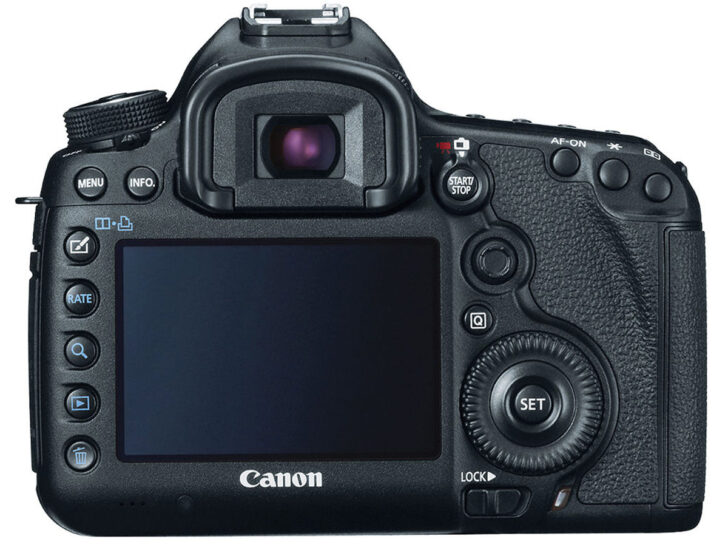
The sensor’s analog-to-digital conversion was the cause of these banding issues (as well as third-party converters not fully understanding Canon’s RAW format). Other sensor manufacturers such as Sony had already moved to placing the ADC (analog to digital converters) on the sensor die to minimize noise and control banding.
This led to the D800 and other cameras having superior dynamic range and noise response, which, of course, made it a huge problem. Naturally, at this time, everyone then needed far more dynamic range and couldn’t take a single photograph unless they were pulling it up 3 stops in the shadows.
There were some smaller improvements made by updated firmware and a downloadable banding update, but banding was still present, and the problem was never fully resolved.
It was always going to be a challenge to replace the EOS 5D Mark II. Thankfully, Canon has been sensible with its upgrade, choosing to focus on improving its weaker areas. So, while the resolution is largely unchanged in the 5D Mark III, the sensor’s low-light and high-sensitivity performance is markedly better.
However, for me, the greatest improvement is to the camera’s AF system. The 5D Mark III focuses faster than its predecessor and has all the advanced settings one would expect from Canon’s EOS-1D professional series of DSLRs.
What these two major new features mean is that the appeal of the 5D Mark III may stretch to an even greater range of photographers than the Mark II. However, those more interested in video may be left wanting a little more.
Amateur Photographer
Nevertheless, with autofocus improvements, video advances, and increasing versatility, made the Mark III a market leader and worthy successor to the 5D Mark II.
Key Features
- 22.3MP Full-Frame CMOS Sensor
- DIGIC 5+ Image Processor
- 3.2″ 1.04m-Dot ClearView II LCD Monitor
- Full HD 1080p Video Recording at 30 fps
- 61-Point High Density Reticular AF
- Native ISO 25600, Extended to ISO 102400
- 6 fps Shooting in RAW+JPEG
- 63-Zone Dual Layer Metering Sensor
- 14-Bit RAW Files and S-RAW Format
- Magnesium Alloy Body, SD/CF Card Slots
Canon EOS 5Ds and Canon EOS 5DsR
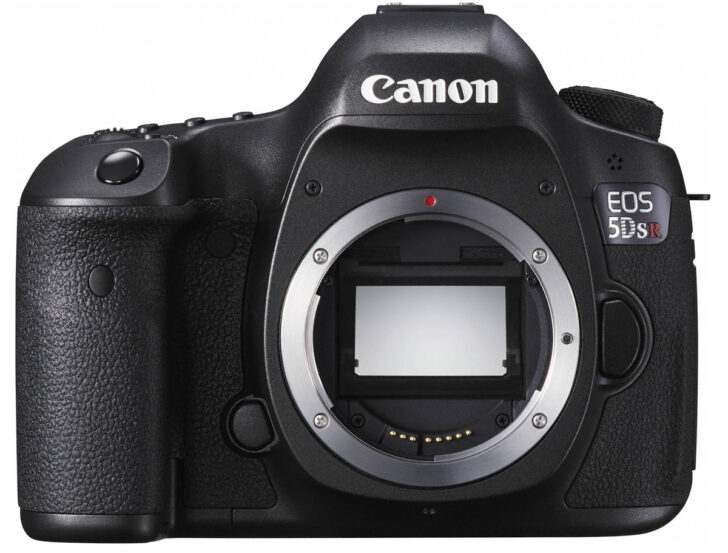
The Canon EOS 5Ds and 5Ds R were first introduced in June 2015. They were high-resolution niche products, driven by intense competition in the professional DSLR market. The 5Ds was released at $3,699, while the 5DsR was announced at the price of $3,899. Both cameras featured 50.6-megapixel full-frame CMOS sensors, compared to the 22.3 megapixels of the 5D Mark III, allowing both cameras to create large, detailed images for landscape, studio, and commercial photo needs.
The two cameras had dual DIGIC 6 processors, which allowed for 5 fps, as opposed to 6 fps from the 5D Mark III, and a similar 61-point AF system. The 5Ds included an optical low-pass filter, while the 5DsR did not include a low-pass filter, which may induce moiré but produce slightly sharper images.
Overall, the Canon 5DS is a solid performer that is as good of an addition to your arsenal as it would’ve been when it was released. If you are a photographer who is looking to capture stills of the highest quality, this camera is for you. I use my Canon 5DS on the most demanding of jobs when top image quality is required. This is the camera on which I have shot some of my best work. This is also the camera I use on editorial shoots and whenever I want to get a medium format feeling. Every image I take with this camera feels a little different. The sound of the shutter is a little slower, and the images feel more special.
FStoppers
Canon developed these cameras to counter competitors like the Nikon D810 (36.3 megapixels, launched 2014), which was the first to offer great dynamic range and high resolution, and the Sony A7R (36.4 megapixels) – one of the first mirrorless cameras to offer high resolution.
The Pentax 645Z (51.4 megapixels, 2014) was a medium format camera that further pressured Canon to push the DSLR boundary closer to a medium format high-end approach. Relative to the Mark III, the 5Ds/5DsR offered an emphasis on detail but sacrificed dynamic range, often necessitating AEB in high contrast scenes and only offered 1080p video, not helping its appeal as a hybrid camera when compared to D810.
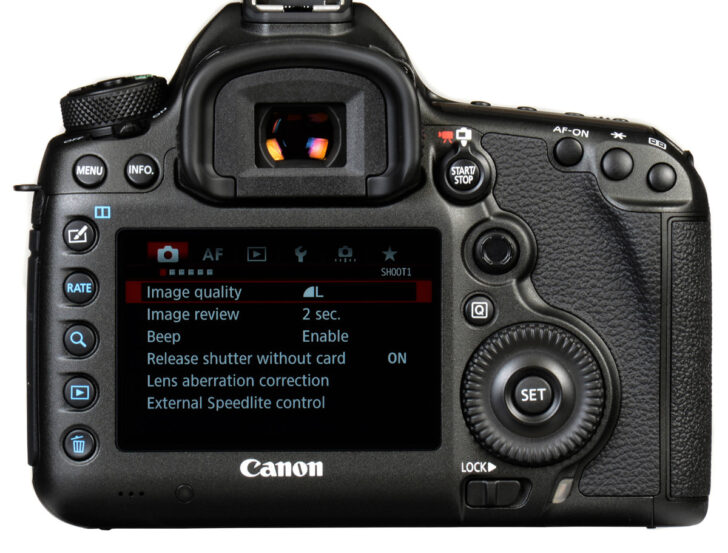
In the marketplace, the 5Ds and 5DsR appealed to a narrow pool of professionals like fine art and advertising photographers, but the two cameras were quickly undermined by the overall capabilities of the 5D Mark IV. Canon has not attempted an “s” or “sR” model in the 5 series since, instead increasing the resolution of the 5 series cameras to nearly match what the 5Ds provided.
You could say that the 5Ds and 5DsR laid down the foundation for the high-resolution 45MP sensors in the R5 series.
Key Features
- 50.6MP Full-Frame CMOS Sensor
- Dual DIGIC 6 Image Processors
- 3.2″ 1.04m-Dot ClearView II LCD Monitor
- Full HD 1080p Video Recording at 30 fps
- 61-Point High Density Reticular AF
- ISO 100-6400; 5 fps Continuous Shooting
- 150,000-Pixel RGB+IR Metering Sensor
- User-Selectable Shutter Release Time Lag
- Anti-Flicker Compensation
Canon EOS 5D Mark IV
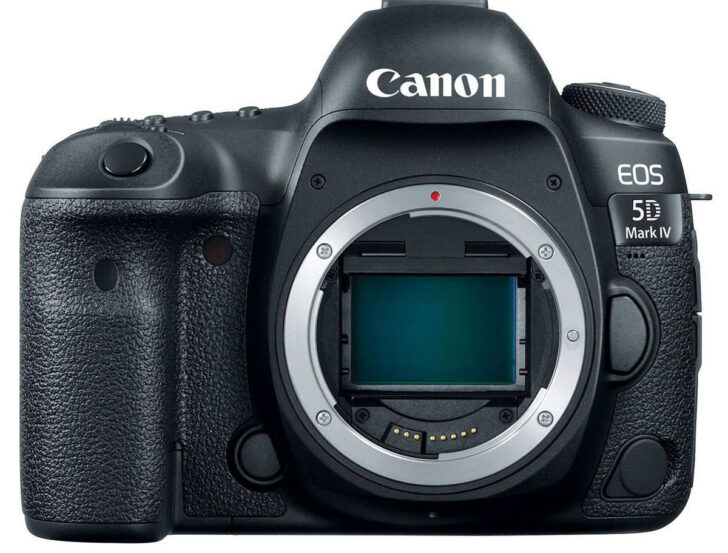
Launched in September 2016, the Canon 5D Mark IV was a significant improvement over the 5D Mark III. At a retail price of around $3,500, the Canon 5D Mark IV had a 30.4-megapixel full-frame sensor which was a fairly large jump from the 22.3 megapixels in the Canon 5D Mark III. More importantly, it touted improved dynamic range and noise handling. The Canon 5D Mark IV could also shoot at 7 fps, had a 61-point autofocus system, and was powered by a DIGIC 6 and a DIGIC 6+ processor.
This time, Canon also featured the Dual Pixel CMOS sensor for the first time in a full-frame camera; it had existed in Canon’s APS-C sensors at the time since the 70D in 2013. This allowed Canon to have far better video autofocus than its peers. The dual pixel CMOS autofocus made a significant difference in live view and video autofocus, while the 4K video recording at 30 fps and 1.64 crop surpassed the 5D Mark III’s 1080p.
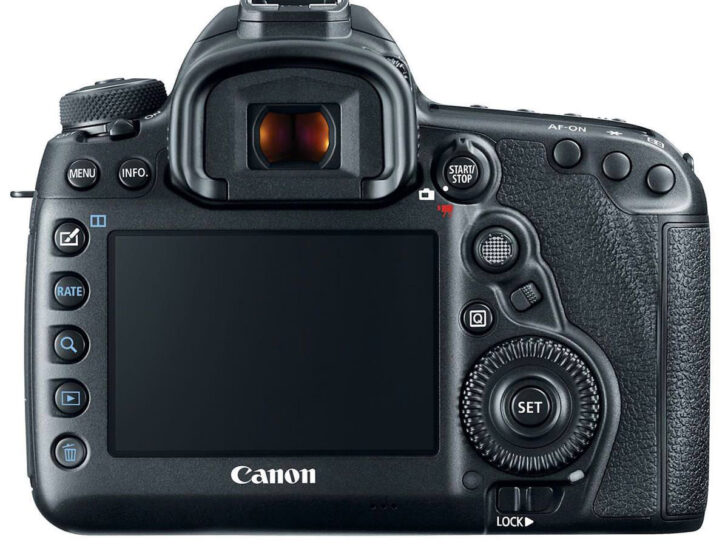
The increased resolution of the Mark IV over the Mark III was great for detailed usage, such as studio or landscape, and it also had much improved shadow pulling and dynamic range. Overnight, dynamic range wasn’t a problem in the forums, and they moved on to something else.
The 5D Mark IV also had a Dual Pixel RAW format that you could process using Canon’s DPP software to add novel post-processing control to the camera. This RAW format and processing never matured and didn’t turn into something outside of experimental usage since the 5D Mark IV.
My expectations were that the Canon EOS 5D Mark IV was going to be at least as wildly successful as its predecessors were, but that expectation was not very hard to realize. The Canon EOS 5-series cameras have become synonymous with value and versatility. Though they are not inexpensive cameras, they are considerably cheaper than the 1-Series models. But, even at a much lower price, these versatile and practical cameras are very high-performing, delivering a very solid feature set with extremely high image quality.
The feature sets included in the 5D-series have enabled them to aptly serve a wide range of photographers’ needs including portraiture, weddings, events, landscapes, nightscapes, architecture, photojournalism, street/documentary photography and even sports. Canon EOS 5D Mark IV continues this tradition, taking performance, image quality and the feature set to new levels. This camera is going to take a lot of pro and amateur kits to the next level.
The-Digital-Picture
Any sensor issues noted on the Mark IV were insignificant overall. The hybrid advantages of the 5D Mark IV with its DPAF sensor and build quality made it a favorite camera choice for the professional shooter.
Key Features
- 30.4MP Full-Frame CMOS Sensor
- DIGIC 6+ Image Processor
- 3.2″ 1.62m-Dot Touchscreen LCD Monitor
- DCI 4K Video at 30 fps; 8.8MP Still Grab
- 61-Point High Density Reticular AF
- Native ISO 32000, Expanded to ISO 102400
- Dual Pixel RAW; AF Area Select Button
- Dual Pixel CMOS AF and Movie Servo AF
- 7 fps Shooting; CF & SD Card Slots
- Built-In GPS and Wi-Fi with NFC
Canon EOS R5
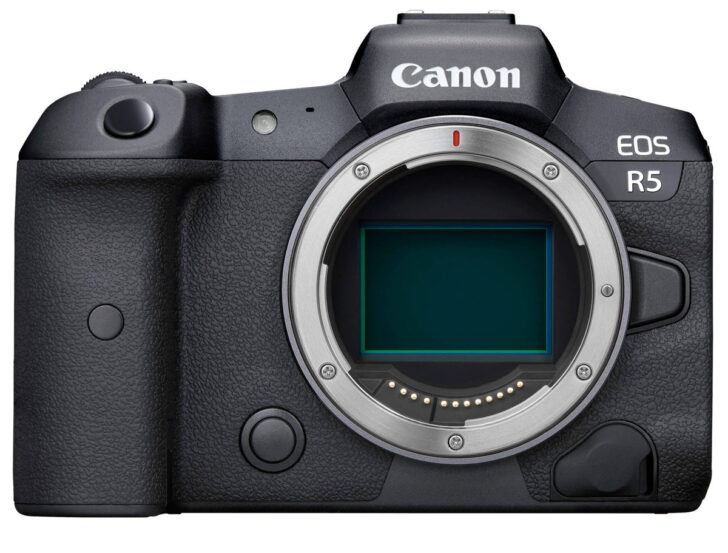
The Canon EOS R5, introduced in July 2020, was Canon’s leading mirrorless, effectively replacing their 5D Mark IV. Retailing for about $3,900, the 45-megapixel full-frame sensor outshone the 5D Mark IV’s 30.4 megapixels, producing better images with a higher dynamic range.
The R5 could deliver up to 12 fps (mechanical shutter) and 20 fps (electronic shutter), while the Mark IV was limited to 7 fps. The Canon EOS R5’s Dual Pixel CMOS AF II had excellent subject tracking, eye auto focus, and featured far quicker and more accurate autofocus while in video modes. Of course, it had to as the R5 relied solely on the Dual Pixel CMOS sensor to perform all autofocus, as it was a mirrorless camera, unlike the 5D Mark IV.
The R5’s 8K raw at 30 fps to 4K at 120 fps stunned the industry and blew away the 5D Mark IV’s 4K at 30 fps. The R5 also sported in-body stabilization, a first for Canon, with up to 8 stops of stabilization. Canon threw nearly everything it had at the time into the R5, making it temporarily the flagship camera of the RF lineup until the EOS R3 arrived on the scene.
Overall, I feel the R5 fully ushered in Canon’s RF system and closed the book on the legacy DSLR system with the notable exception of a 1-series-like camera.
So I guess the real question, after several months of real-world use, is whether or not I am happy with my investment? In the case of the R5, I can say categorically that the R5 has ended up being a smart purchase. Did the camera make me a better photographer? No. A camera doesn’t make you better. You make yourself better through practice and pushing yourself creatively. But what the R5 has proven itself to be is a smartly designed workhorse capable of nearly flawlessly performing all the tasks required by professional photographers. Is it better as a still camera than a dedicated video camera? Yes. But, let’s not forget, it is a still camera. The video benefits are supposed to be extra. So a camera can do worse than be an amazing still camera with fantastic, if somewhat imperfect, video capabilities.
https://fstoppers.com/reviews/canon-r5-longer-term-analysis-after-6-months-field-577014
The Canon EOS R5’s overheating discussion started shortly after its launch because with the camera’s advanced capabilities for 8K RAW video and 4K 120 fps, it had considerable thermal limits that annoyed some videographers. Users complained of the camera shutting down after 5-15 minutes of 8k recording and 15-25 minutes of high frame rate 4k, with recovery times of up to an hour that made their recording workflow complicated.
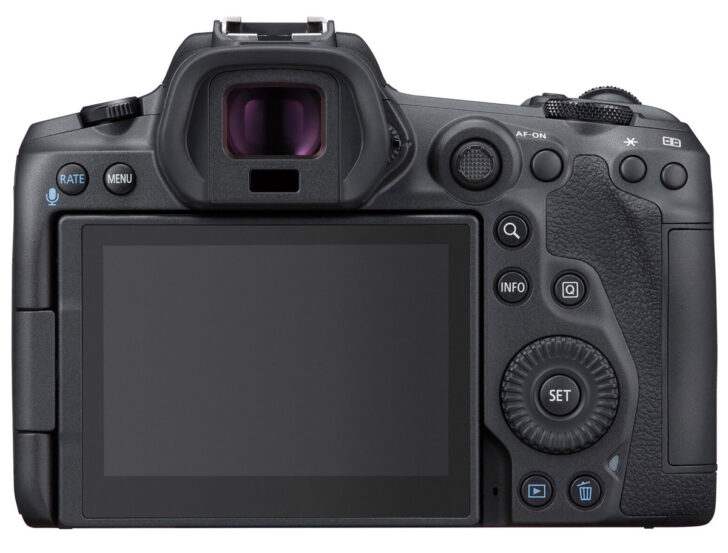
The critics claimed the R5’s magnesium alloy body and compact design were an effort to bundle the camera’s heat dissipation. Others speculated that Canon firmware limited recording time to protect the hardware of the R5, or to segment the market for Canon’s cinema cameras deliberately. The tin foil was used in mass quantities as the industry latched onto this as a “serious problem” affecting the camera.
In 2021, firmware updates addressed some of the problems by increasing record time to 20-25 minutes for 8K, however this flaw tarnished the R5’s otherwise amazing hybrid camera in the forums where minute things like this matter.
My personal take was that Canon was too slow to come up with high threshold firmware settings that Sony and others had already adopted, which allowed the camera to potentially burn people’s hands if they were holding the camera during recording. Many of the reviewers ignored this difference in safety considerations to gain notoriety and views. Not long after, all of Canon’s future cameras allowed for a high temperature threshold that is not meant to be handheld.
Key Features
- 45MP Full-Frame CMOS Sensor
- DIGIC X Image Processor
- 8K30 Raw and 4K120 10-Bit Internal Video
- 400MP In-Camera Files with No Software
- Sensor-Shift 5-Axis Image Stabilization
- 12 fps Mech. Shutter, 20 fps E. Shutter
- Dual Pixel CMOS AF II with 1053 Points
- 3.2″ Vari-Angle Touchscreen LCD
- Subject Tracking with Deep Learning
- CFexpress & SD UHS-II Memory Card Slots
Canon EOS R5 Mark II
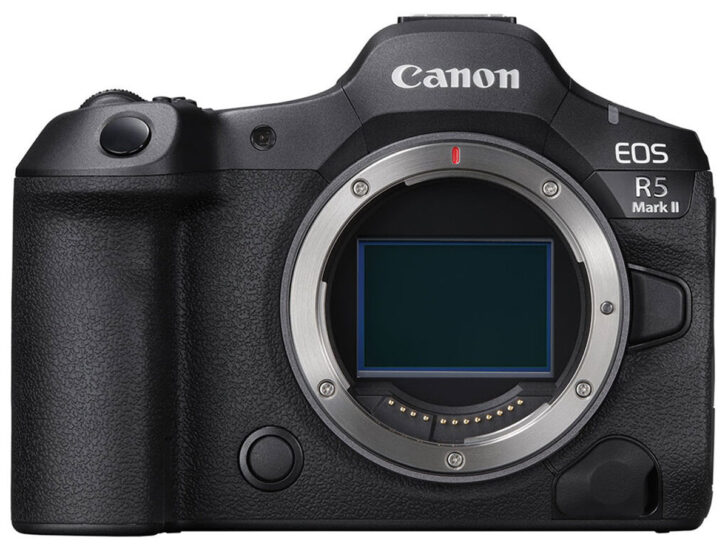
The Canon EOS R5 Mark II, launched in July 2024, as Canon’s premier hybrid mirrorless camera, succeeding the R5.
The Canon R5 Mark II improved on the R5 for action photography, with faster burst rates and improved autofocus using new modes for Action and People Priority borrowed from the EOS R3 camera. The video was also better with higher frame rates and better Clog profiles. For the most part, thermal problems have been eliminated with expanded times over the R5 and the ability to use a specialized cooling grip.
The sensor, because it had a much faster readout speed, had slightly less dynamic range (~0.4EV at lower ISOs) and a little higher in an electronic shutter (~0.5EV). Of course, this is a problem in the forums.
In the market, the R5 Mark II competes with the Nikon Z8 and Sony A7R V, offering similar resolution and speed. Its $400 price increase over the R5’s $3,899 launch price may deter R5 owners unless they are prioritizing action or video.
The Canon EOS R5 Mark II is an enticing proposition for Canon owners eyeing an upgrade from either a 5D SLR or older EOS R system camera. It focuses quickly and reliably, rattles off 45MP photos at a brisk pace, and its Stacked BSI CMOS beats out many other high-pixel cameras for video. It’s basically a better version of the EOS R5.
PCMag
One significant innovation (about time, Canon) for the R5 Mark II was an external cooling grip for video purposes. The optional CF-R20EP cooling fan grip extends 8K video recording by shunting heat quickly out of the camera.
Key Features
- 45MP Full-Frame Stacked BSI CMOS Sensor
- DIGIC Accelerator Processing
- Dual Pixel Intelligent AF, Eye Control
- 8K 60 Raw/4K 60 SRAW/4K 120 10-Bit Video
- Up to 30 fps, Pre-Continuous Shoot Mode
- 5.76m-Dot EVF with OVF Sim. View Assist
- 3.2″ Vari-Angle Touchscreen LCD
- In-Camera Upscaling to 179MP
- CFexpress & SD UHS-II Memory Card Slots
- Wi-Fi 6E / Wi-Fi 6 Support
Canon 5 Series – It’s all about the Sensor
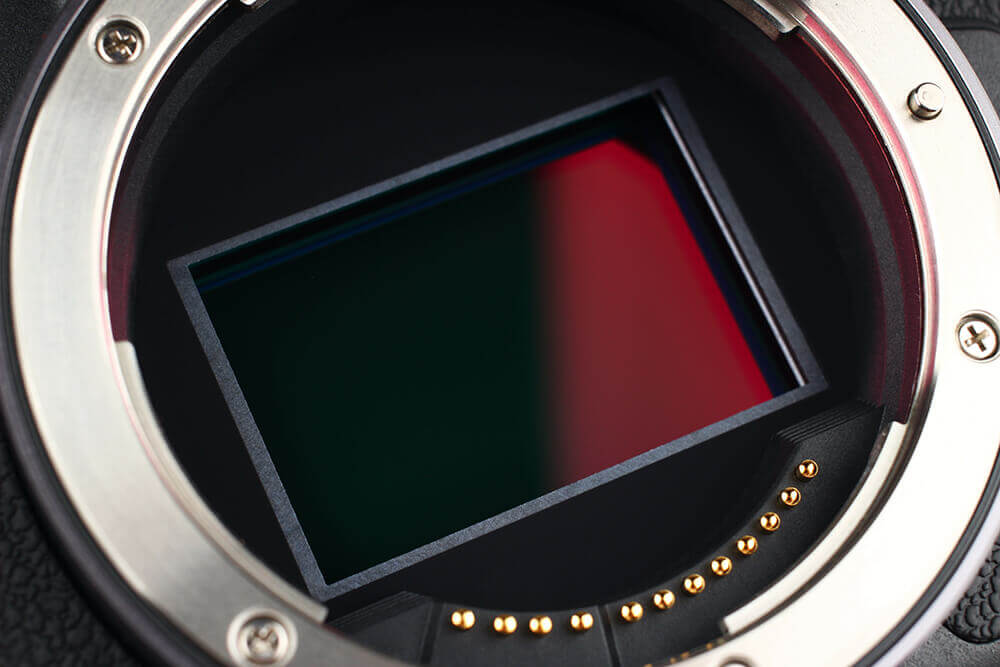
When you look back at the Canon 5D line, it’s remarkable how the sensors have improved over the years. Canon has always been trying to improve the 5D line. What really changed for the sensor was when Canon introduced Dual Pixel CMOS AF with the 5D Mark IV with the incorporation of on sensor ADC (analog to digital converters). Suddenly, the forums stopped complaining about dynamic range, because Canon had finally produced a sensor that measured up to the other brands such as Nikon and Sony.
After this point, people quickly changed their complaints to video specs, autofocus speed, anything that Canon was not keeping pace with other companies (real or imagined). It’s like once Canon accomplished a certain threshold, they just moved the goalposts.
You can definitely see the advance when you plot it out on a graph. Thanks to photonstophotos we can do that. With the original 5D, bracketing was pretty standard operating procedure for higher dynamic range scenes. The 5D Mark II was a bit better, but you would still be stacking exposures in order to keep highlights or to pull up shadows. The 5D Mark III, with its banding, was problematic for pulling up shadows.
The difference between the versions before the Mark IV and the Mark IV was huge. You could push files in post without the image quickly falling apart.
And then there was the R5, and Canon added a dual gain sensor. That further enhanced the dynamic range over the Mark IV.
Honorable Mention
Canon EOS 5

The Canon EOS 5 was a semi-professional 35mm SLR film camera announced in November 1992 (referred to as the EOS A2/A2e in the USA) that introduced groundbreaking features for its time. The EOS 5 utilized Canon’s EF lens mount and supported a wide range of lenses, appealing to both professionals and enthusiasts. However, its most noteworthy feature was the world’s first eye-controlled autofocus, which allowed users to focus on one of five focus points by looking through the viewfinder.
The EOS 5 used a 6V lithium 2CR5 battery (or optional BP-5 D-cell pack) and had a built-in zoom flash, AF assist light, and a motor drive capable of 5 frames per second. The EOS 5 offered a variety of exposure modes and metering modes.
When compared to its leading competitor, the Nikon F90X, the EOS 5 had better automation; however, its flash system was criticized for being less intuitive. At the time, the EOS 5 was well-regarded by professionals and prosumers alike, holding its own compared to the Nikon equivalents until the EOS 3 took over in 1998.
This laid the groundwork for the EOS 5 Digital Series that we now enjoy.
Canon EOS R
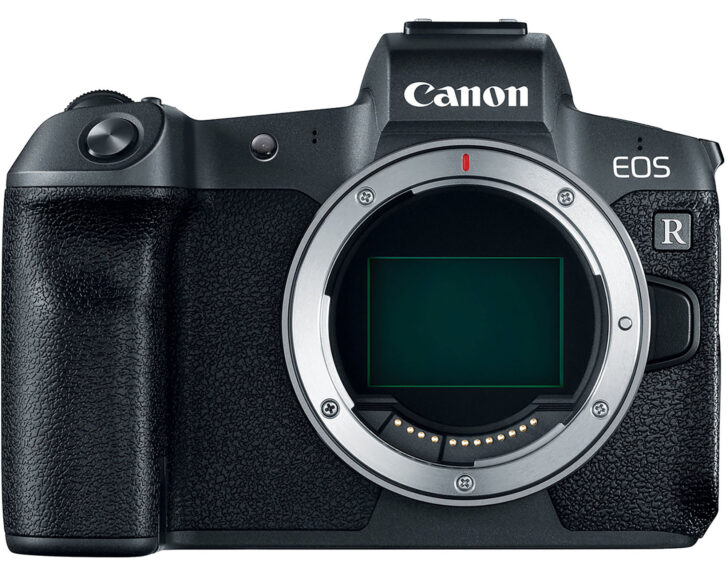
Canon finally entered the full-frame mirrorless market in 2018 with the EOS R. It took a bit of time for the camera to catch on, but there were a lot of early adopters of the camera and the RF lenses that were launched alongside it
For a lot of us, we were waiting for what was next, and that was the EOS R5 and EOS R6.
The Canon EOS R, in many ways, was a mirrorless version of the EOS 5D Mark IV. It shared the same image sensor and processor, along with many other components from the parts bin.
One feature that was quite polarizing was the “multi-function” bar. I think most of us are happy that didn’t stick around and is a part of history along with the print button.
Key Features
- 30.3MP Full-Frame CMOS Sensor
- DIGIC 8 Image Processor
- UHD 4K30 Video; C-Log & 10-Bit HDMI Out
- Dual Pixel CMOS AF, 5655 AF Points
- 3.69m-Dot OLED Electronic Viewfinder
- 3.15″ 2.1m-Dot Swivel Touchscreen LCD
- Expanded ISO 50-102400, 8 fps Shooting
- Wi-Fi and Bluetooth, SD UHS-II Card Slot
- Multi-Function Bar, Dual Pixel RAW
Thoughts
Writing this article, it really does surprise me how far the 5D line has come—from the original 5D, where you would have been sweating the exposure in challenging lighting situations, to the R5, where you were able to shoot with confidence in nearly any scenario.
Looking back at the entire 5D lineage, it is obvious Canon listened to photographers, closing gaps and creating new standards, and the whole time, the marketplace kept finding new things to criticize.
|
When you purchase through links on our site, we may earn an affiliate commission. Here's how it works. |


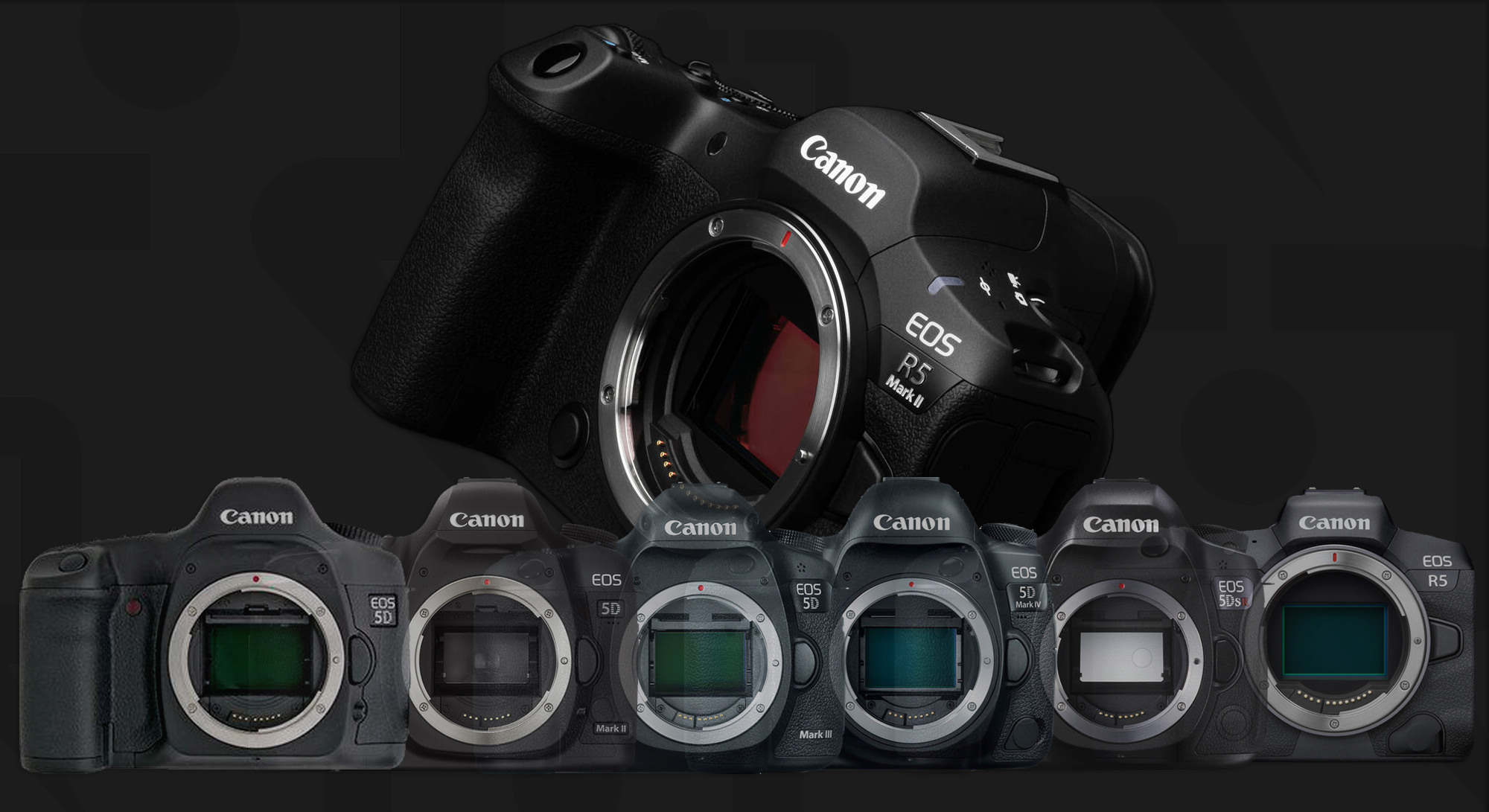






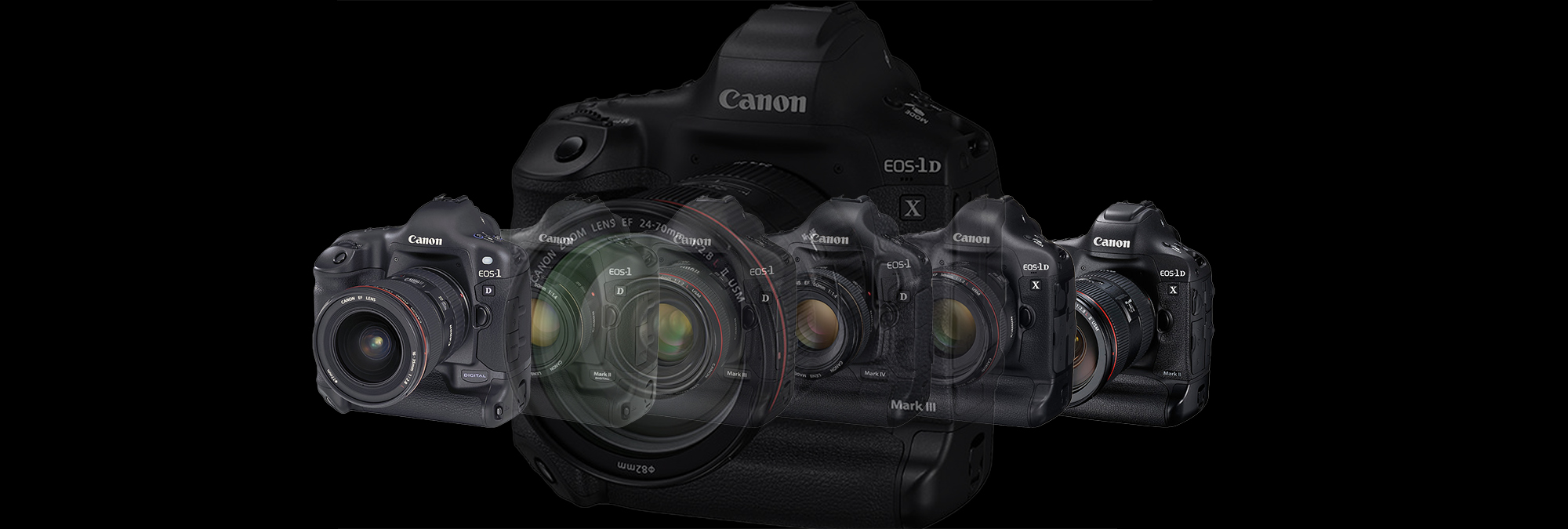
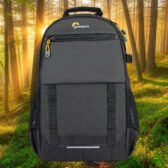
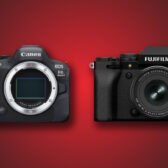
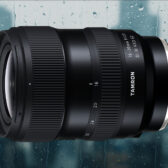
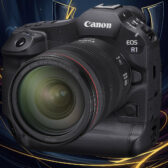
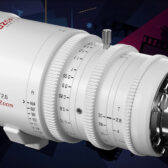

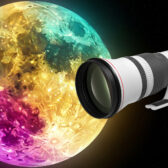

My first camera was a Kodak 126 Instamatic, cost $0.85 (?,lol) at goodwill. Got an Olympus OM-1 in 1974-ish, then a 2-S. Small, light! My first Canon was the legendary, for its time, T-90, which may have been the first camera with a polycarbonate smoothly rounded body. Sold my first pics to magazines with it, downhill skiing and a few other individual sports. First EOS was the A2E, mentioned in this article. Progressed to the EOS 1N, and the 1D II, circa 2005. From there, progression has been 5D II, 7D and II, 5D III and IV, R5 and II...
I've owned the 5D Mark II, III and IV. I would have bought the Mark V.
I couldn't justify the much higher R5 price. So I went the R6 Mark II route.
I really loved and still love all these cameras.
Internet: Canon could never put 8K full frame in to a mirrorless camera. They don't have the technical capabilities to do that. The last time they innovated was when 5d mkii was born.
Canon: Our next 5 series will have 8K and demonstrate what we are capable of.
Internet: (spits coffee on screen) Yeah right. Maybe 8K timelapse mode
Canon: No, 8K video
Internet: Er no, 8K like 15 second movie burst mode then, because you know overheating would happen in such a small body. Do Canon engineers not know anything about physics? That's why refrigerators exist....
Canon: No full 8K video
Internet: Yeah right.... hahaha. It's not possible. So no AF or IBIS then. You won't be able to use the full technologies of the camera/
Canon: No. 8K Full frame, AF and IBIS enabled.
Internet: It's not possible, because you know.... overheating is a thing with technology in such a small package. If it was possible then Sony would have done it.
Canon: Hold our beer.....
Post launch
Internet: I demand a full unconditional apology from Canon. I demand immediately that they give us unlimited 8K full frame video for $4.99 and stop hiding behind this "overheating" scenario to protect their other cameras. I’ve never felt so personally insulted by a camera company as I have by Canon. To me honest behaviour is very important. I recognize that the only person that is perfect is me and people make mistakes. The important thing is to admit that and not to sell us totally unusable technology like this…
=> Canon made their first error by using timers for the video before the first firmware update to make the shutdown based on actual temps.
Youtube videos of putting their R5 in the fridge after shutting down were popular. Smallrig talked about having a peltier fan for the rear panel.
=> IMO, the biggest error was not including a HDMI 2.1 port. Yes, it would have meant slightly higher cost but being able to remove sources of heat from the CFe card would have removed all discussion about overheating.
One editorial note--the 5D Mark IV section has a 5D Mark III review appended to it. Just an observation--I loved both of those cameras and really appreciated the blast from the past.
I don't think the "3" was a replacement for the "5" as Wikipedia now claims. The "5" stayed in production for several years after the 3 came out. The "3" was considerably more expensive and was a far more advanced camera. It was the best camera Canon had on sale until the 1V arrived a couple of years later (2000).
But you have correct the naming in \"The Canon EOS R, in many ways, was a mirrorless version of the EOS R5 Mark IV.\" to \"EOS 5 Mark IV.\";-)
I've owned the entire 5D mark 1-4, the eos r, the r5 and now the r5ii, great series.
In 7 years, not one single freezing or mechanical failure.